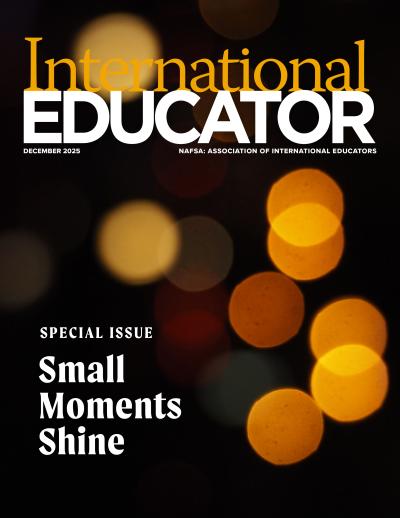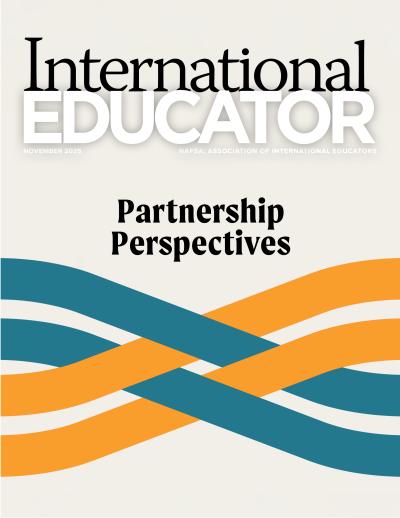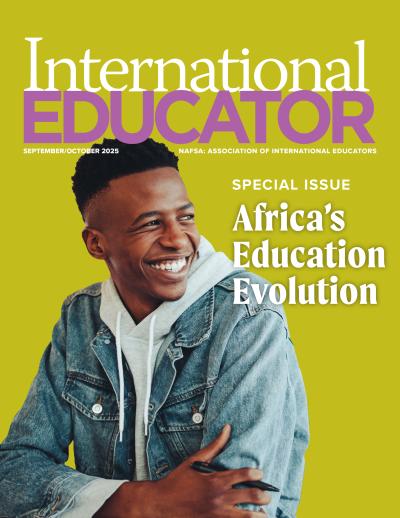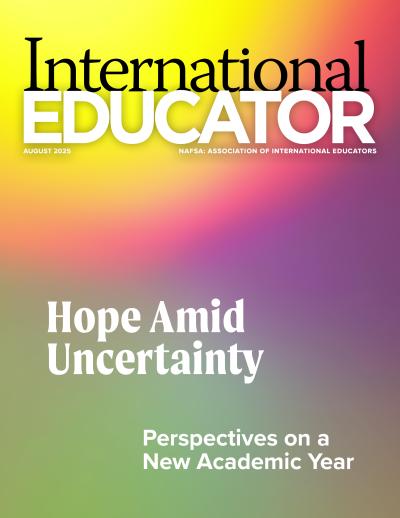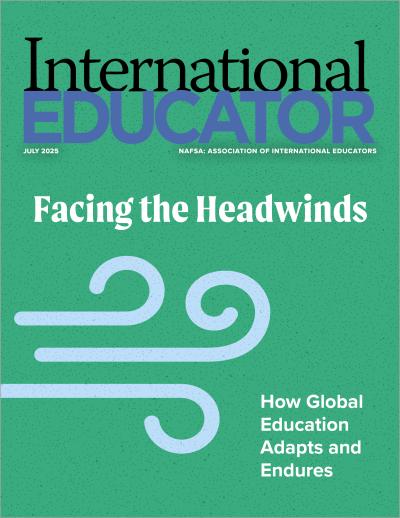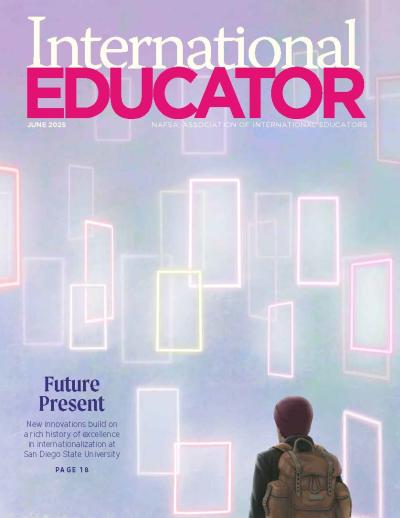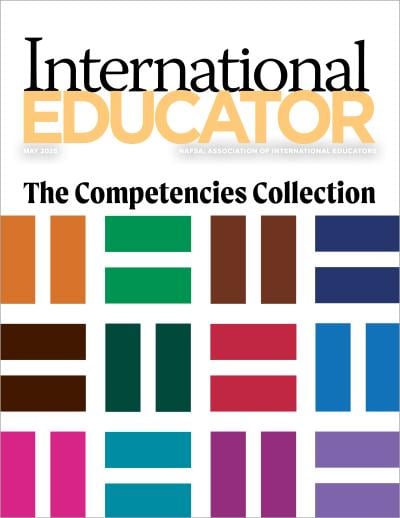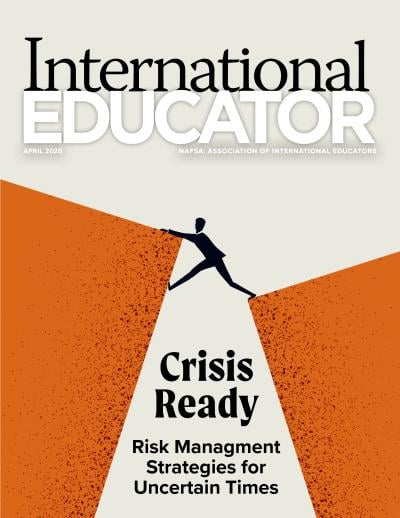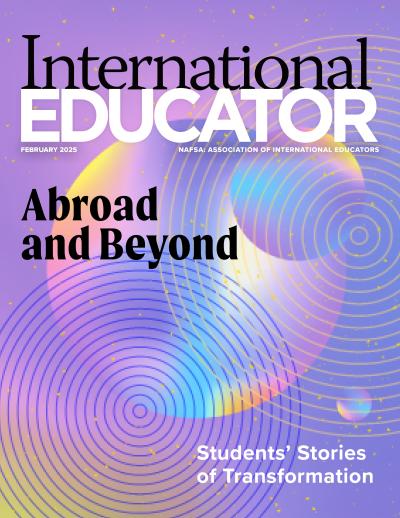Five Strategies for Teaching Intercultural Learning

For international educators whose jobs include teaching or training, intercultural competence is necessary for preparing students for success in a multicultural, global society. When students better understand the attitudes, influences, and values driving their own beliefs and behaviors, they can spark conversations about different cultures without resorting to stereotypes or prejudice.
Several tried-and-true teaching strategies can help educators meet these objectives and effect intercultural learning, as well as assess and measure success.
1. Build trust.
Discussions around an individual’s identity, assumptions, and values are intensely personal and often evoke emotional reactions. International educators should build trust within the classroom by setting a tone that encourages students to listen to and support each other.
“Students are recognizing [that there are] all these forces on who they are, how that places them in the world, how others treat them, and how they interact with the world around them,” says Katherine Punteney, EdD, professor and founder of the MA in international education management program at the Middlebury Institute of International Studies. “This is inherently personal, and it can be threatening to be vulnerable by discussing their identities.”
One way to build trust, Punteney says, is to give students choices in how they engage, which could include offering a choice of research or presentation topics and allowing students to express themselves in a variety of ways—from essays and art projects to videos and more. And international educators should also allow students to decide for themselves what personal information they feel comfortable sharing.
2. Encourage student engagement.
Another important element of intercultural teaching or training is asking students to actively engage with different cultures. That doesn’t necessarily require studying abroad; intercultural experiences can take place close to home in numerous ways without leaving campus. Encourage students to learn about different religions, sample international cuisine, or host an international student for a meal or activity.
“I encourage people to go beyond their comfort zone, their immediate communities, or the people that they know who are like themselves and to actively seek out people who are different from them,” says Sora Friedman, PhD, chair and professor of international education at the School of International Training (SIT). “As they engage with them, they can learn with them.”
Students also learn from one another in the classroom. Melissa Hawkins, EdS, international teaching and learning specialist at the University of Alabama-Birmingham, structures class discussions in a way that encourages all students to participate—even those who are reluctant to speak or don’t think quickly on their feet.
“I encourage people to go beyond their comfort zone, their immediate communities, or the people that they know who are like themselves and to actively seek out people who are different from them.” —Sora Friedman
For example, Hawkins often “requires a one-minute or three-minute preparation time before starting a time of active engagement, so that everybody has time to mentally prepare.” Giving opportunities to prepare oral responses is especially helpful for students whose first language is not English.
Another effective technique Hawkins uses is the “gallery wall,” which involves setting up whiteboards with prompts or questions. As each student arrives for class, Hawkins gives them a whiteboard marker and asks them to put responses on the boards. Their ideas are later are used to spur group discussions.
3. Facilitate student interaction.
Darla K. Deardorff’s model of intercultural competence cites openness and curiosity as essential elements for intercultural learning. International educators can help students develop these attitudes by strategically setting up work groups, instead of letting students select their own group partners, or by assigning group projects that require diverse perspectives to complete.
“Students have to become open to new ways of learning and knowing...they learn to withhold judgment.” —Melissa Hawkins
For example, as an instructor of Teaching English to Speakers of Other Languages (TESOL), Hawkins might assign students to work in pairs to come up with questions related to material covered in class. Those questions can then be turned into topics for classroom discussion. Or she may set up TESOL projects that “require students to be curious [because] they need information from other people.”
“Students have to become open to new ways of learning and knowing—when they’re not expecting the same thing to happen in every class meeting [or they have to] seek others’ perspectives,” Hawkins says. “They learn to withhold judgment because they’re learning that they can, in fact, embrace content or acquire knowledge in different ways.…Instructors can forward growth in intercultural competency by specifically targeting, by the way they teach, the attitudes and skills that are needed.”
4. Require self-reflection.
Thinking critically about one’s personal characteristics, attitudes, assumptions, and values—as well as exploring one’s reaction to differences in others—is an important part of intercultural learning. As students reflect on how they perceive themselves and others, they can become more accepting and tolerant of people who are different from themselves.
At SIT, graduate students create a “cultural autobiography,” Friedman says. This involves completing a series of response prompts—about topics such as sexual orientation, religion, socioeconomic status, where they grew up, what kind of community they grew up in, languages spoken in their home—and exploring how those identities shape their thinking and behavior.
“The cultural autobiography is incredibly powerful,” Friedman says. “Our students are aware of their identities and their experiences, but many of them have never been asked to articulate them and really think about how they affect their future work. So we ask the students…to consider which ones are most relevant to them and what that might mean for their work as international educators in the future.”
5. Practice humility.
In intercultural education, it’s critical for teachers and trainers to think of themselves as coaches or facilitators rather than authority figures who have all the answers, Punteney says. Instead, international educators can take on the attitude of humility, recognizing and valuing the contributions students bring to classroom discussions and learning. This approach means instructor and students are learning together.
“Intercultural learning is somewhat different than other subject areas where the teacher has the content knowledge and is trying to transfer that knowledge to students,” Punteney says. “It becomes much more of a collaboration and a partnership because there aren’t necessarily right or wrong answers to many of the topics that would be covered.”
Assessing Intercultural Learning
While helping students develop intercultural competence begins with classroom strategies, how can international educators know whether their tactics have been effective? How can they benchmark their work against appropriate criteria and what peers at other institutions are doing?
One challenge of assessment: Intercultural learning is a lifelong process.
“Intercultural competence development is always a process, and it’s never finished,” Hawkins says.
Hawkins uses the American Association of Colleges and Universities (AAC&U) Intercultural Knowledge and Competence Value Rubric as a guideline for planning assignments and evaluating students. It includes criteria such as cultural self-awareness, knowledge of cultural worldview frameworks, verbal and nonverbal communication skills, and attitudes such as openness and curiosity.
“Intercultural competence development is always a process, and it’s never finished.” —Melissa Hawkins
At SIT, all students are required to complete fieldwork, whether in paid positions, internships, practicums, or volunteer roles. They also must write reflections on the work they are doing and answer prompts about how they handled various situations. Friedman recalls one former student who was teaching English abroad and got fired. The student’s reflection paper on the experience “was some of her best work ever,” Friedman recalls.
“She was able to unpack the assumptions that she had made, articulate how her behaviors may have been viewed by her local counterparts, and understand why they were problematic,” Friedman says. “From an SIT perspective, her learning was outstanding. The fact that she was fired from the job was immaterial. [She could articulate] what she learned from that experience. And that reflection is a core piece of what we do and how we are teaching.”
Helping All Students Grow
These teaching and learning strategies are not just for international educators; they can be effective across the curriculum for institutions striving to expand their global learning initiatives.
“If we’re going to say that intercultural competence is a skill that our graduates need to leave our institutions with, then we’re not doing right by them if we don’t help them grow in this area,” Hawkins says. “Many of them are going to be working with diverse others—working in contexts where they need to be able to handle multiple perspectives, where they need to be able to engage in conversations and problem-solving with people who are very different than them. We have a responsibility throughout our institutions to forward the development of intercultural competence.” •
NAFSA Resources
About International Educator
International Educator is NAFSA’s flagship publication and has been published continually since 1990. As a record of the association and the field of international education, IE includes articles on a variety of topics, trends, and issues facing NAFSA members and their work.
From in-depth features to interviews with thought leaders and columns tailored to NAFSA’s knowledge communities, IE provides must-read context and analysis to those working around the globe to advance international education and exchange.
About NAFSA
NAFSA: Association of International Educators is the world's largest nonprofit association dedicated to international education and exchange. NAFSA serves the needs of more than 10,000 members and international educators worldwide at more than 3,500 institutions, in over 150 countries.
NAFSA membership provides you with unmatched access to best-in-class programs, critical updates, and resources to professionalize your practice. Members gain unrivaled opportunities to partner with experienced international education leaders.





